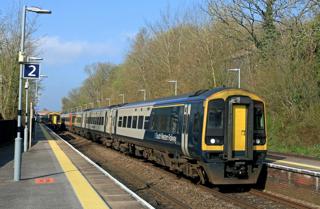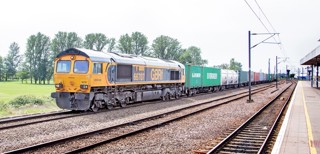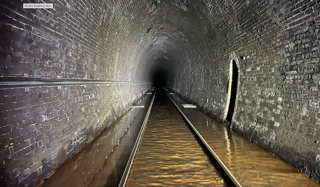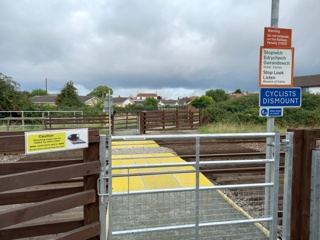In the last full year of Sir Patrick McLoughlin’s tenure as Secretary of State for Transport, in 2015, I joined him at Old Dalby one Friday afternoon for a chat and a cab ride on the nine-car Hitachi IEP then being tested.
We worked towards Nottingham on the 25kV overhead, quickly reaching 125mph. At the northern end of the line, near Plumtree, we stopped to reverse and as we set off the driver said: “I shall be switching to diesel en route Nigel - want to see that?”
You bet! At precisely 100mph, the SoS and I watched as the driver reached to his right and calmly pressed a single button labelled ‘Diesel’. The driver said: “OK… all the diesels have started… they’re generating power… and… the pantograph just went down.”
The speedo remained rock steady on 100mph. There was no variation in speed, no surge - the changeover was seamless. Following a spell of mixed feelings about IEP bi-mode, I realised in that moment what a game-changer it could be.
Several times since I have expressed surprise on this page about the lack of a conversation about partial electrification. It struck me that in tricky locations you need not use continuous 25kV OLE - the examples I quoted were the Severn Tunnel and the Pennine Tunnel between Manchester and Leeds, or Sydney Gardens in Bath. I wasn’t alone: the availability of viable bi-mode from Hitachi rapidly prompted Hull Trains to scrap its advanced plans to finance 41 miles of electrification from Doncaster to Hull to enable use of electric traction throughout, rather than having to use Adelante DMUs under the 156 miles of OLE from Doncaster to King’s Cross.
Two years later and Secretary of State for Transport Chris Grayling has made it known that this policy is indeed to be followed. Partial electrification is now the preferred way forward, and so main line traction power will come from whatever Grayling says is “the most appropriate source” - electricity from OLE, or the onboard diesel engines.
Hmm. “Appropriate”. This, I guess, is where we may encounter problems in planning. Given their previous dismissive (sometimes contemptuously so) verdict on bi-modes, train engineers are likely to rerun the argument about the inefficiency of lugging dead weight diesels around while running under 25kV power - and they have a valid point.
But railways have always been, and will always be, about trade-offs. It would be relatively straightforward to calculate the impact of the carbon footprint imposed by the railway’s decision to cart hundreds of thousands of litres of raw sewage around the network every day, for millions of miles over the decades. That really is non-productive deadweight!
The trade-off we chose, however, is that the environmental cost of the carbon footprint is less damaging than the environmental impact of dumping all that raw sewage on the track. Because diesels do have problematic emissions, and the places that they will be used to eliminate very costly OLE will be precisely those places where they are least desirable: tunnels, where diesel emissions can be drawn into train air-conditioning and ventilation systems; or intensely built-up areas - such as on the TPE route, where in the narrow valley-bottom Victorian stone-terraced residential housing and industry are close by, right on the boundary fence line. We need to mitigate those emission problems as much as we can.
In the longer term, the availability of better batteries could even eliminate the diesels in due course, with on-board banks of smart batteries being recharged on carefully positioned sections of overhead out in open country, at terminus buffer stops and in stations. The perfecting of cost-effective hydrogen technology could alternatively eliminate OLE altogether - either way, only installing new overheads where we absolutely have to is a future-proofed policy decision. And before you snort that I’m away with the fairies regarding hydrogen technology, I can tell you that I watched no fewer than three hydrogen-powered locomotives being trialled in the UK in mid-June. True they were only 10¼in gauge but they had been built by three of the 12 (yes, 12!) teams which had built working locomotives to compete in the fifth annual Institution of Mechanical Engineers ‘Engineering Challenge’ at the superb two-mile Stapleford Miniature Railway, near Melton Mowbray (see page 20).
There were around 200 people involved in this year’s challenge, being scrutinised by no fewer than seven former chairmen of the IMechE’s Railway Division. I’ll be writing more about this superb event soon in RAIL. Meanwhile, it all contributes to the pragmatic sense of a carefully considered partial electrification policy. And going forward it must be carefully considered - because that isn’t how we’ve got where we are.
DfT’s enthusiasm for partial electrification has more to do with horror at the tripling of GW wiring costs from £800m to £3bn, the suspended animation of the paralysed Midland Main Line electrification (no one has believed for many months that it will go beyond Kettering and Corby) and wide-eyed silent panic about what TPE wiring costs might be, given many tight constraints and a three-mile Pennine tunnel. In other words, the partial electrification narrative, in my view, has merit but in reality is an opportune choice rather than a carefully evolved and considered strategy.
And that’s where the DfT’s feet will need to be held close to the fire. Decisions on where gaps in OLE will be must be the result of optimal planning and not driven merely by the need to reduce cost. So, yes, it probably makes sense for wires to go to Cardiff and not Swansea. Yes, a case can be put for not wiring through Pennine tunnels. There are other infills and extensions which will fit a carefully considered bi-mode crieteria, but these locations cannot and must not be chosen simply because they’re expensive to wire.
Bi-mode is here to stay. Hitachi has successfully and stylishly kicked open the door. Porterbrook is converting eight Class 319 EMUs to bi-mode operation. DRS has successfully introduced the bi-mode Class 88 heavy hauler from Stadler to create a geographically completely flexible traction solution.
Don’t be surprised at confirmation that Kettering will be the northern reach of MML electrification, with bi-mode diesel services beyond to Leicester, Derby, Nottingham and Sheffield. Don’t forget Bombardier’s ‘Project Thor’ from some years ago was a catenary car to slot into the DEMU Meridian trains. That would be the easiest and most cost-effective way to resolve the MML problem.
But DfT must not be allowed to make the big strategic decisions on cost grounds alone. Did I mention the need for a ‘guiding mind’…?
Comment: RAIL 831: July 19 - August 1 2017

















Login to comment
Comments
No comments have been made yet.